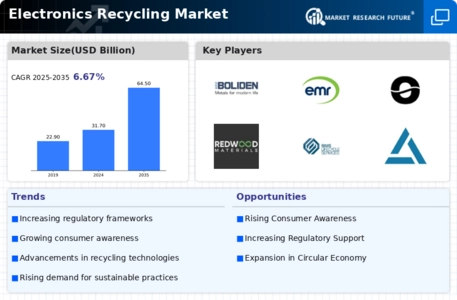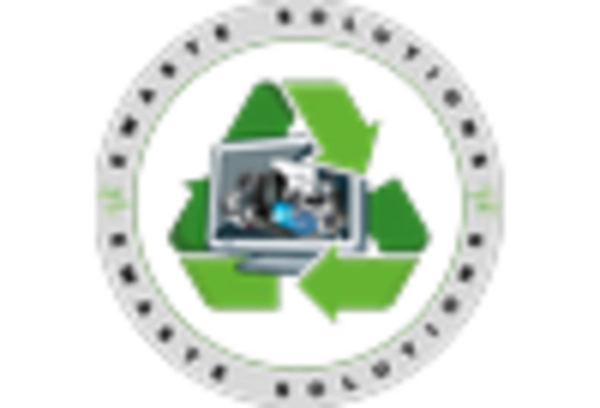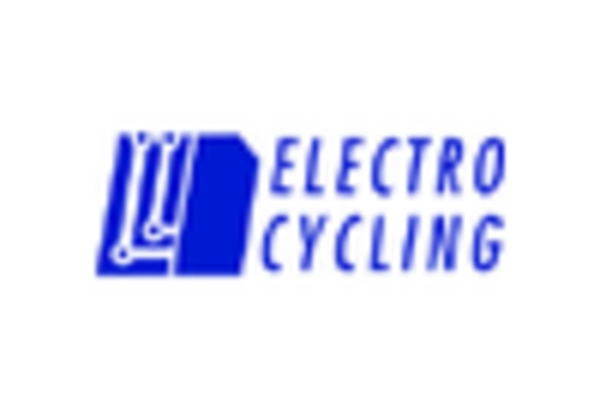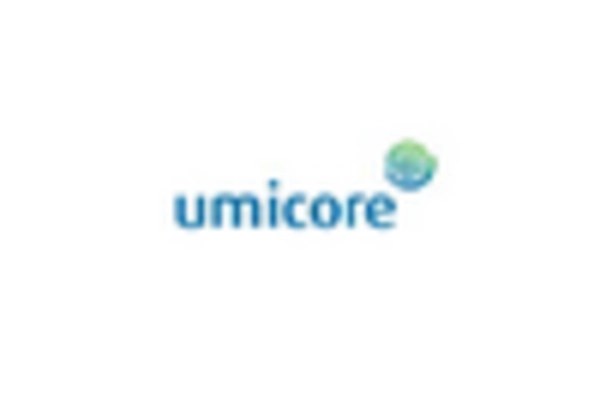Rising Consumer Awareness
Consumer awareness regarding the environmental impacts of e-waste is on the rise, significantly influencing the Electronics Recycling Market. As individuals become more informed about the harmful effects of improper disposal of electronic devices, they are increasingly seeking responsible recycling options. Surveys indicate that a substantial percentage of consumers express a willingness to recycle their electronics if convenient options are available. This growing consciousness is prompting businesses to enhance their recycling programs and promote sustainable practices. The Electronics Recycling Market stands to benefit from this trend, as companies that prioritize eco-friendly initiatives may attract environmentally conscious consumers, thereby gaining a competitive edge in the market.
Increasing E-Waste Generation
The Electronics Recycling Market is experiencing a notable surge in e-waste generation, driven by rapid technological advancements and consumer demand for the latest devices. It is estimated that the volume of e-waste produced annually could reach 74 million metric tons by 2030. This increase in discarded electronics necessitates effective recycling solutions to mitigate environmental impacts. As consumers replace older devices with newer models, the volume of obsolete electronics continues to rise, creating a pressing need for recycling services. The Electronics Recycling Market must adapt to this growing challenge by developing efficient collection and processing methods to handle the influx of e-waste. Furthermore, the potential recovery of valuable materials from e-waste presents an opportunity for economic growth within the industry.
Economic Incentives for Recycling
Economic incentives are increasingly influencing the Electronics Recycling Market, as both governments and private entities recognize the financial benefits of recycling e-waste. Various programs and initiatives are being introduced to encourage recycling, such as deposit return schemes and tax incentives for companies that engage in responsible recycling practices. These economic incentives not only promote recycling but also stimulate job creation within the industry. The potential for recovering valuable materials, such as precious metals and rare earth elements, further enhances the economic viability of recycling operations. As the demand for these materials continues to grow, the Electronics Recycling Market is likely to see increased investment and participation from various stakeholders.
Regulatory Pressures and Compliance
The Electronics Recycling Market is significantly influenced by stringent regulatory frameworks aimed at managing e-waste. Governments worldwide are implementing laws and regulations that mandate proper disposal and recycling of electronic products. For instance, the European Union's Waste Electrical and Electronic Equipment (WEEE) Directive sets ambitious targets for recycling rates, compelling manufacturers to take responsibility for their products at the end of their life cycle. Compliance with these regulations not only ensures environmental protection but also enhances the reputation of companies within the Electronics Recycling Market. As regulations become more rigorous, businesses are likely to invest in advanced recycling technologies and processes to meet compliance requirements, thereby driving market growth and innovation.
Technological Innovations in Recycling
Technological innovations are playing a crucial role in shaping the Electronics Recycling Market. Advances in recycling technologies, such as automated sorting systems and advanced material recovery techniques, are enhancing the efficiency and effectiveness of e-waste processing. These innovations not only improve the recovery rates of valuable materials but also reduce the environmental footprint of recycling operations. For instance, the implementation of artificial intelligence in sorting processes allows for more precise identification of recyclable materials, leading to higher quality outputs. As these technologies continue to evolve, they are likely to drive growth within the Electronics Recycling Market by enabling companies to process larger volumes of e-waste more sustainably.

















Leave a Comment